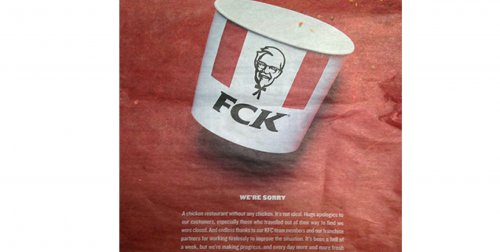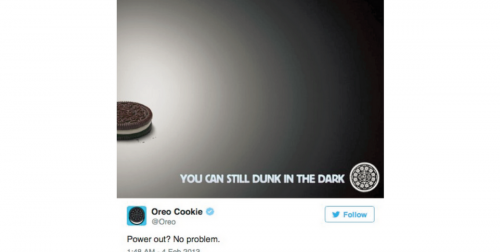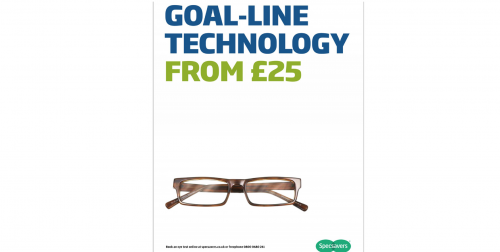How brands react to what is going on around them (including how they react in social media) tells us a great deal. It exposes a lack of strategy in some brands, a lack of agility in others. In this new blog post, client director Sarah Williamson provides 8 tips to help you manage your brand both strategically and also with agility.
Marketing professor and Marketing Week columnist Mark Ritson declared agile and nimble to be “the watchwords of those who have no strategy…only tactics”
You can scroll through social media at any time of the day or night and see exactly what he means, with brands butting into the conversation, using hash tags inappropriately and aligning themselves in-authentically to various causes. There seems to have been a lot of this going on recently!
There’s also the opposite problem though – brands who don’t take part in the conversation real-time at all. In some organisations, multiple stakeholders want to approve everything before it’s said, written, printed or posted. A ‘media spokesperson’ may speak on behalf of the brand two weeks after the event – but by then the moment has passed.
How brands react to what is going on around them (including how they react in social media) tells us a great deal. It exposes a lack of strategy in some, a lack of agility in others.
But strategy and agility can live happily alongside one another.
Brands that have acted swiftly and yet also purposefully in recent years include the likes of Oreo, Specsavers and more recently KFC. They are hailed within the Marketing industry for being able to react quickly, but I would argue they were fundamentally highly strategic too.
We believe that with some time set aside for thinking and planning, teams can set themselves up to be agile and responsive to real world events, real-time, in a very meaningful and on-brand way.
So in our experience, what’s mission-critical if you want to be both strategic and agile?

1. KNOW YOUR AUDIENCE
Who are they, what do they care about and where can you find them? A deep understanding of your audience should guide all your communications. Ensure all the consumer-facing teams in your organisation know your audience well, so they can engage with them in a relevant way. You can facilitate this by creating consumer personas and empathy-building exercises. For example, Takeda a Japanese Pharmaceutical company, designed an immersive experience for employees, so they could understand what life is like for patients who live with Irritable Bowel Disease. They called the initiative ‘In their shoes’.
2. KNOW CLEARLY WHAT YOUR BRAND STANDS FOR
Know it, and ensure it is lived authentically through the whole organisation. If you stand for (or want to get involved in a conversation about) gender equality for example, you need to ensure you actually treat your employees equally. Otherwise your communications become meaningless or worse, appear hypocritical, as State Street, the asset manager that installed the Fearless Girl statue on Wall Street, discovered.
3. KNOW WHAT YOU’RE TRYING TO ACHIEVE
This should help guide the type of communications and channels you invest time and budget into. If you’re trying to reach very large numbers of the general population quickly with a consistent message, as KFC needed to do recently, a ‘traditional’ media option like press is a sensible choice. It’s highly likely, if reach is your objective, that you will need to use paid media, so budget and plan accordingly.

4. FIND YOUR BRAND TONE OF VOICE AND USE IT CONSISTENTLY
Innocent does tone of voice brilliantly as this Econsultancy blog describes.
5. AGREE SOME GUIDELINES
If disaster strikes, you need to be able to react quickly and cross-functionally. The last thing you want to be doing is designing a crisis management process, social media guidelines or a product recall approach when you’re in the middle of a catastrophe – because it will slow everything down – so it’s better to be prepared.
6. GATHER A TEAM WITH A COLLABORATIVE SKILL SET & TOOLS, AND THE MINDSET TO MATCH
This is a team who can plan your content and communications proactively, and who can also be relied upon to react quickly. The team may include a brand lead, copywriter, designer, planner and media buyer. The team may also include a lawyer or compliance specialist, depending on your industry. They may be physically sitting together in a ‘news room’ or working remotely from one another, connected by technology such as Slack or What’sApp. Oreo famously organised their team of 11 in a ‘war room’ for the 2013 Superbowl so they were ready for anything – even a power cut! They designed, approved and posted an image and tweeted ‘You can still dunk in the dark’ within minutes. Brands need this multi-skilled team not only for big events such as the Superbowl, but 365 days a year as they strive to be topical and relevant to people’s lives. It’s easy to say, but in large organisations it can be complex to deliver.

7. CREATE A CONTENT CALENDAR
This should be based on a content strategy. It should include real world events that you and your team can plan for to ensure you are current all year round. There are many hints, tips and templates out there for creating content calendars – personally I like the approach Hubspot uses.
8. LISTEN & RESPOND
Listening helps build trust and relationships between brands and their consumers. Whether face to face or online, anyone who represents a brand to a consumer needs to have the skills and ability to listen and respond to complaints, compliments, reviews and news – and be part of a conversation that’s happening anyway. Specsavers have, in the past, been masters of responding to news with quick turn-around content that fits their ‘Should have gone to Specsavers’ campaign.

Brands who put these 8 suggestions into action create an incredibly useful framework. That framework empowers their team to operate with guardrails, but also with freedom and creativity.
Oreo, Specsavers and KFC are examples of brands who have such a framework in place and who have demonstrated both strategy and agility very intelligently recently – we salute you!
If you’d like any help being both strategic and agile in your Marketing communications, please get in touch!
*This is a completely made-up word
